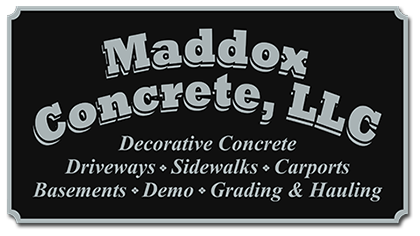Concrete is a great building material. It is strong, durable, and easy to produce. That is why it is the most common building material in the world. But that does not mean it is perfect — concrete can still sink, chip, crumble, and crack after settling. Here are some reasons why the concrete may sink noticeably.
Causes of Sinking
The two main causes of the sinking of concrete are:
Base construction issues: Concrete slabs are usually placed over a base built before construction. However, not all bases are built equal – some are not compacted appropriately, while others are made using inappropriate materials, like softer soils or loose aggregates that are not sufficiently dense.
For instance, a common area where you find sunken concrete is near the perimeter of the foundation. This perimeter is referred to as the over-dig region, set slightly further from the actual foundation to enable workers to move easily around the foundation. If you fail to backfill the over-dig area properly, it settles in, causing sinking.
Water erosion: Water continuously intrudes under the slab and washes or erodes the stone or soil base. Clay soils often compound water intrusion effects as the clay freezes and expand during cold weather and contracts when the weather is warmer, creating voids leading to sinking. Moreover, a poorly graded yard, where the water does not flow to the intended area (like a storm drain or open, permeable area) but sits along the concrete, causes sinking.
How To Prevent a Sunken Driveway
How can I prevent my concrete from sinking? Some things that you can do to prevent concrete from sinking include:
- Seal all openings or cracks near concrete with either polyurethane caulk or silicone. To fill larger caps, use a backer rod and apply caulk material on top.
- Seal any open sides of the concrete slabs with soil to ensure water does not slip below them.
- Ensure the downspouts discharge water not less than five feet away from your concrete slabs.
- Ensure the base is at least four inches deep and well compacted during new concrete installation.
Repairing Sunken Concrete
The three common options for repairing sunken concrete are: replacing sunken slabs, slab jacking, and polyurethane foam injection.
- Replacing sunken slab: If your concrete slab has sunken considerably, you should consider a replacement. However, a new concrete slab might not address the cause of the problem. If the concrete cracked as a result of the weight of the slabs, the problem will recur. Pouring fresh concrete over soil that cannot bear the weight of the slab will not solve the problem. Additionally, concrete slab replacement is the costliest of the three options.
- Slab jacking: Slab jacking lifts a settled or sunken concrete slab by pushing a grout through the concrete and forcing it up from below. The process involves combining a dense, finely ground limestone aggregate with Portland cement and water in a slurry, and forcing it into the holes. This fills any voids under the slabs. Once you fill the voids, succeeding injections begin the lifting process.
- Polyurethane foam injection: This process involves using a closed cell polymer foam to lift concrete slabs.
Are you looking for a contractor to fix your sunken concrete slabs? Founded in 1900, Maddox Concrete, LLC, specializes in finishing all kinds of concrete for commercial and residential clients. Our services include driveways, footings, decorative concrete, pavement, sidewalks, demolition, hauling, and property grading. For quality workmanship, call (919) 353-2684.

